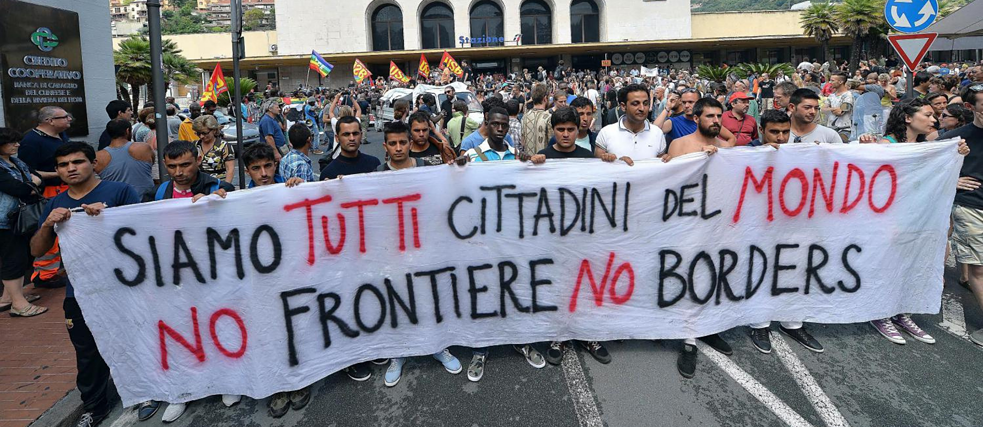International Activism
How climate activists around the world inspire each other

Colonial, capitalist and patriarchal social structures entail that regions and beings are unequally affected by climate change. Activists around the world are joining forces to fight this inequality. How do they work together across borders? Baïa and Jo share their experiences of international activism.
By Victoria Berni
Common struggle across borders
As a legacy of colonialism, the globalised economy has in certain ways created international activism, e.g. between France and the French overseas territories on the issue of chlordecone, an insecticide that was used massively on banana plantations in Martinique and Guadeloupe from 1972 to 1993 and played its part in making prostate cancer more common in the Antilles than anywhere else. Baïa, 27, reports how activists in the overseas territories and metropolitan France are now considering how to disrupt supply chains to draw attention to the problem.International activism can also mean direct support for local struggles, such as those that have taken place along the French-German border since the 1990s. Protests are held here to obstruct the transport of nuclear waste.
Learning from others and making friends
At the age of 18, Jo went to university and began to get involved in the anti-globalisation movement: "It was the time of the international counter-summits. The first World Social Forum was held in Porto Alegre, Brazil in 2001." Jo says that these meetings brought together activists from all over: "I got to know people who were involved in all kinds of different areas. This gave me a far better understanding of the different worlds of activists and their concerns."Jo explains that " international meetings play an important role in mediating resistance actions and giving visibility to local struggles." Such mediation also takes place across generations. The fact that there are street medics, for example, is a resistance measure from the 1960s, developed by the Black Panther Party and the American Indian Movement, and practised and taught today in places of nuclear resistance such as Bure or even in the actions of the yellow vests.
Baïa's approach to environmental advocacy is based also on knowledge passed down in this way: "As a person of African descent, you rarely have access to soil, because where I come from, our soils are polluted and don't belong to us. So I draw inspiration from the tactics of the Maroons, a form of environmental and social resistance by black people in the slave colonies. They fled to the mountains and high altitude forests where they managed to survive, sometimes for years, by developing crop rotation and becoming self-sufficient. Like them, I want to gain new freedoms, for example, through secured food production. This gives me a point of reference in my struggle."
Limits, challenges and goals of internationalism
For Baïa, the challenge is a "kind of imperialism: people who are not directly affected claim certain struggles for themselves. They decide what the other needs, as is so often the case in humanitarian aid. This in turn keeps people in a relationship of dependency." According to Jo, "Internationalism has been somewhat forgotten since the end of the anti-globalisation movement in the early 2000s. The knowledge wasn't passed on, plus the activists got older and the issue was forgotten too quickly. There is a lack of an international activism culture."What can be done about it? For Jo, "there is no panacea. We have to create international spaces for encounters and compare notes about the different actions again. We need to educate ourselves together, renew the tools while trying to preserve differences so as not to wind up with a homogeneous mass."
Much more could be said about how colonial structures influence climate activism. Matilde from Portugal will therefore continue these thoughts in her contribution available to readers as of 15 July!
In the third season of Blog, Engage, Act! our bloggers therefore take a look at the main focus of movements. What will it take for differences and commonalities? How do I create awareness for the injustices in our world? And above all, how can those affected have their say in a world that is dominated by inequalities?